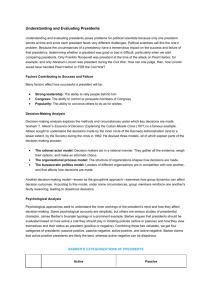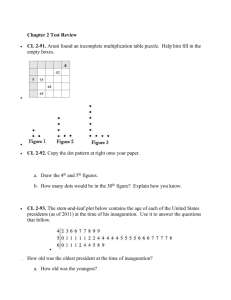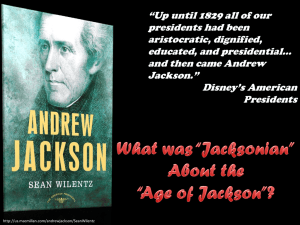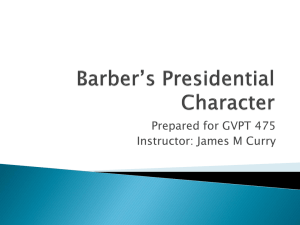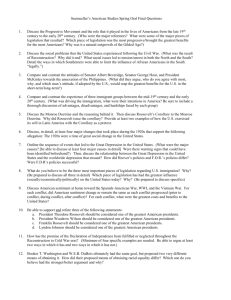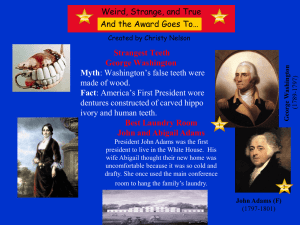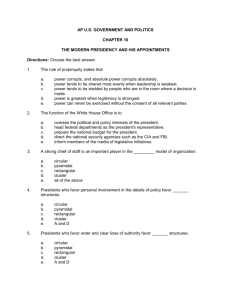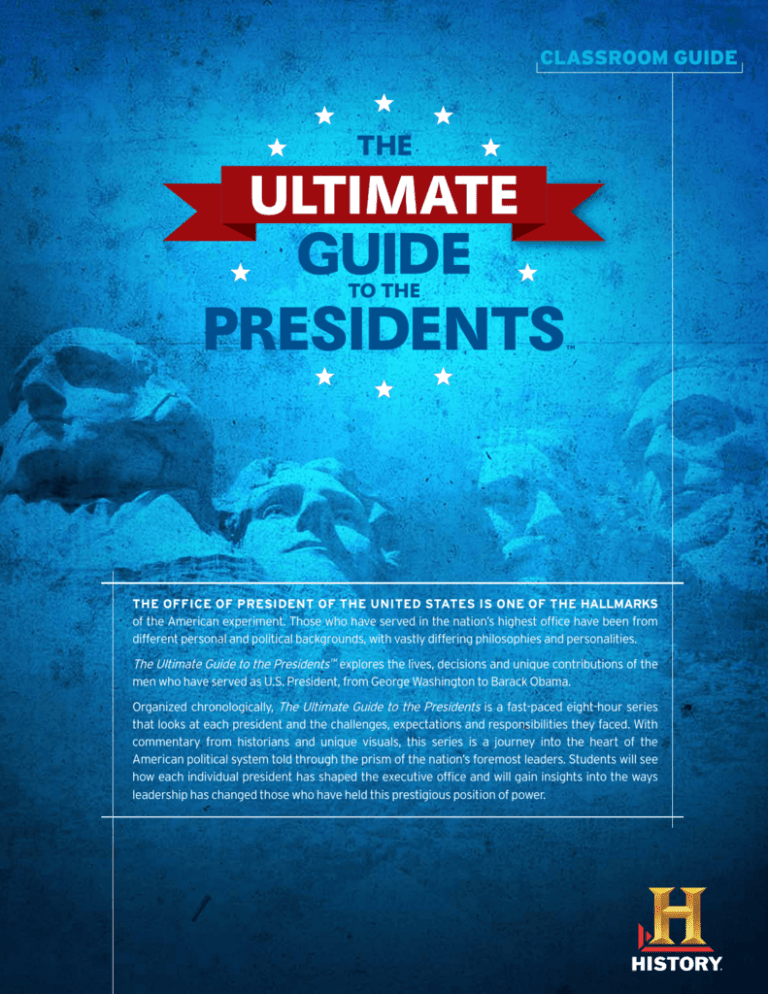
STUDY GUIDE
CLASSROOM GUIDE
THE OFFICE OF PRESIDENT OF THE UNITED STATES IS ONE OF THE HALLMARKS
THE OFFICE OF PRESIDENT OF THE UNITED STATES IS ONE OF THE HALLMARKS
of the American experiment. Those who have served in the nation’s highest office have been from
of the American experiment. Those who have served in the nation’s highest office have been from
different personal and political backgrounds, with vastly differing philosophies and personalities.
different personal and political backgrounds, with vastly differing philosophies and personalities.
The Ultimate Guide to the Presidents explores the lives, decisions and unique contributions of the
The Ultimate Guide to the Presidents™ explores the lives, decisions and unique contributions of the
men who have served as U.S. President, from George Washington to Barack Obama.
men who have served as U.S. President, from George Washington to Barack Obama.
Organized chronologically, The Ultimate Guide to the Presidents is a fast-paced eight-hour series
Organized chronologically, The Ultimate Guide to the Presidents is a fast-paced eight-hour series
that looks at each president and the challenges, expectations, and responsibilities they faced. With
that looks at each president and the challenges, expectations and responsibilities they faced. With
commentary from historians and unique visuals, this series is a journey into the heart of the
commentary from historians and unique visuals, this series is a journey into the heart of the
American political system told through the prism of the nation’s foremost leaders. Students will see
American political system told through the prism of the nation’s foremost leaders. Students will see
how each individual president has shaped the executive office and will gain insights into the ways
how each individual president has shaped the executive office and will gain insights into the ways
leadership has changed those who have held this prestigious position of power.
leadership has changed those who have held this prestigious position of power.
Curriculum Links
7.Some presidents are considered American icons while others
are almost forgotten. Which of the “forgotten” presidents do
you think should be better remembered, and why?
The Ultimate Guide to the Presidents would be a good fit with
American history, politics, civics, and government courses. It is
appropriate for eighth-grade students and above. Teachers may
want to use specific segments of this program to align with their
course units and lectures on particular eras of U.S. history.
8. What are some of the ways the American Presidency has
changed over time? Do you think these changes have been
positive or negative?
Discussion Questions
9.Which U.S. President do you think was most popular during his
presidency, and why?
1. What were the unique circumstances of George Washington’s
presidency? How do you think he set the stage for later
presidents?
2.
Compare the personal and management styles of the
presidents. Which president do you think was most effective?
Which was least effective?
3. How did the presidents differ in their view of the executive
office? Pick one or two presidents to use as examples in order
to answer to this question.
4.Which U.S. President do you think had the most challenges
while in office, and how did he deal with these challenges?
5.
Through watching this series, you will see that some common
themes and issues emerged throughout the history of the
executive office – dealing with the national debt, determining
the limits of power during wartime, and foreign policy are just
a few of them. How did different presidents handle these
issues? What were the consequences of these different
approaches?
6. This series explores both the personal and the political lives of
the presidents. Describe the role of some of the presidents’
wives, children, or other family members. How did presidential
families influence life in the White House? How might some of
the presidents’ personal lives have affected their work?
Extended Activities
1.Executive Office 101. The U.S. Constitution outlines the
powers and responsibilities of the executive branch of
government. Ask students to review this section of the
Constitution and summarize the roles of the executive
office in bullet points or in a short essay.
2. In the Know. Place the names of each president into a box or
hat and have students choose one of the names. Working
individually or in small groups, students should become an
“expert” on this president. They should learn about their
personal history, key turning points in their administration,
and major events during their presidency. Then, each student
or group can create a presentation about their president, in
PowerPoint format, on posters, or in short oral reports or
plays.
3.
Off the Presses. Each American President had a unique style
and personality. Students can imagine they are a newspaper
reporter given the valuable opportunity to interview one of
the presidents. Which president would they choose to
interview? What five questions would they ask the president?
Students should be sure to research the president and their
policies before compiling their questions, and then can present
these interviews with answers they think the president may
have given.
4. F
rom the Pen of the White House. Ask students to put
themselves in the shoes of one of the presidents and write
a letter to a friend from the perspective of that leader.
Students can think about the following questions when
writing these letters: Who are you, and when are you writing
your letter? What are some of the issues affecting your
term(s) in office? What decisions have you made, or do
you plan to make to solve these problems? Remember,
you don’t know what will happen next!
5. On the Campaign Trail. A campaign manager has a
complicated job in choosing how to present the candidate to
the voters. Ask students to choose one of the presidential
campaigns discussed in the series and imagine they are the
campaign manager for one of the candidates. How will they
“sell” the candidate to the public? Students can make
posters advertising their candidate and can also try writing
a campaign song or slogan.
Primary-Source Activity
Excerpt from Abraham Lincoln’s First
Inaugural Address, March 4, 1861
“In your hands, my dissatisfied
fellow-countrymen, and not in mine,
is the momentous issue of civil war.
The government will not assail you.
You can have no conflict without
being yourselves the aggressors.
You have no oath registered in
heaven to destroy the government, while I shall have the
most solemn one to ‘preserve, protect, and defend it.’
I am loath to close. We are not enemies, but friends. We
Resources
must not be enemies. Though passion may have strained,
BOOKS
it must not break our bonds of affection.
Brinkley, Alan and Davis Dyer. The American Presidency.
(Houghton Mifflin, 2004).
The mystic chords of memory, stretching from every
Gaffney, Dennis and Peter Gaffney. The Seven-Day Scholar:
The Presidents: Exploring History One Week at a Time.
(Hyperion, 2012).
hearthstone all over this broad land, will yet swell the
Milkis, Sidney and Michael Nelson. The American Presidency:
Origins and Development, 1776-2002. (CQ Press, 2003).
Smith, Carter. Presidents: Every Question Answered.
(Hylas, 2004).
battle-field and patriot grave to every living heart and
chorus of the Union when again touched, as surely they
will be, by the better angels of our nature.”
(Read the entire speech at the Miller Center’s Presidential
Speech Archive.)
Waldman, Michael. The Most Important Speeches of America’s
Presidents, from George Washington to Barack Obama.
(Sourcebooks, Inc., 2010).
Document-Based Questions
WEBSITES
2.Why do you think Lincoln would be “loath to close” and end
his speech? Why do you think he may have felt like there
was much more to say?
Learn more about U.S. Presidents on History.com:
www.history.com/topics/the-us-presidents
History.com site on U.S. Presidential Elections:
www.history.com/topics/presidential-elections
The Miller Center’s Presidential Speech Archive:
millercenter.org/president/speeches
The American Presidency Project:
www.presidency.ucsb.edu
1.What do you think Lincoln meant when he said that the
issue of war was in the hands of his “fellow-countrymen”?
Do you think that was true?
3.According to Lincoln, what can the “mystic chords of
memory” do to help preserve the Union? Why do you think
he used this concept to appeal to those who may have
advocated for civil war?
Episode Guide:
THE ULTIMATE GUIDE TO THE PRESIDENTS™
Episode 1: Assume the Position (1789–1825)
Washington, Adams, Jefferson, Madison, Monroe
The United States of America was a bold invention – a new experiment in government
with three branches: a court, a congress and an executive. This episode traces the
founding of the democracy and the first five leaders to hold the highest office.
Episode 2: Power to the People (1824–1849)
John Q. Adams, Jackson, Van Buren, Harrison, Tyler, Polk
America in 1824 saw the era of the Founding Fathers coming to an end. Over the next 25
years, six presidents would reflect the country’s sometimes uneasy transition as the
nation expanded westward.
Episode 3: A House Divided (1849–1865)
Taylor, Fillmore, Pierce, Buchanan, Lincoln
America by the mid-1800s was triple its original size. But with new territory came old
confrontations. Slavery, the question that had been avoided since the country’s birth,
now had to be answered. The nation explodes into civil war.
Episode 4: Executive Retreat (1865–1901)
Andrew Johnson, Grant, Hayes, Garfield, Arthur, Cleveland, Harrison,
Cleveland, McKinley
America after the Civil War was a traumatized country in desperate need of leadership.
Over the next three decades, a series of struggling presidents took a back seat to
Congress and to captains of industry.
Episode 5: Call of Duty (1899–1921)
Theodore Roosevelt, Taft, Wilson
America at the beginning of the 20th century found a growing chasm between rich and
poor. But one president took back the reins, fighting for the common man. Enormous
international conflict emerged, testing America’s strength and the resolve of the nation’s
highest leaders.
Episode 6: Changing of the Guard (1920–1945)
Harding, Coolidge, Hoover, Franklin Roosevelt
America in the 1920s was a country poised for a fresh start. The economy was beginning
to “roar,” and the presidents at the helm were happy to take a backseat to Congress. But
as America crashed into depression – and then another world war – the times called for a
leader, one who would set the table for presidential power in the 20th century.
Episode 7: Hail to the Chief (1945–1964)
In 1945, at the end of a devastating global war, America emerged as a superpower, but the
Cold War presented the nation with a new crisis. The struggle against the spread of
communism abroad and the corrosive effects of inequality at home demanded a new
resolve and steadfast leaders.
Episode 8: Mantle of Power (1965–2013)
Johnson, Nixon, Ford, Carter, Reagan, George H.W. Bush, Clinton,
George W. Bush, Obama
The power of the presidency has often been burdened by the personal struggles or
shortcomings of the men who occupied the office or by a Congress determined to
reassert power. Despite the substantial growth of the power of the office since it was first
imagined, it remains a shining symbol of America’s noble experiment in democracy.
©2013 A&E Television Networks, LLC. All rights reserved. 0053.
Truman, Eisenhower, Kennedy, Lyndon Johnson


